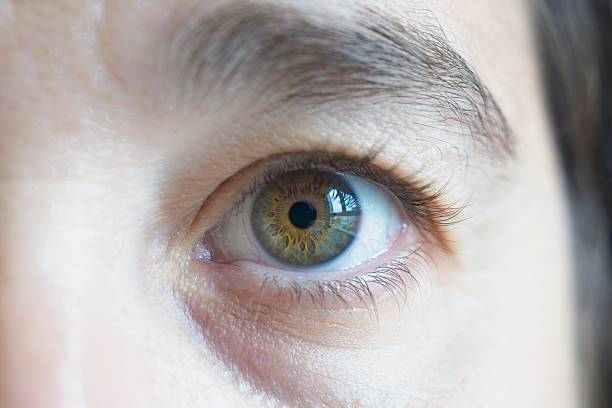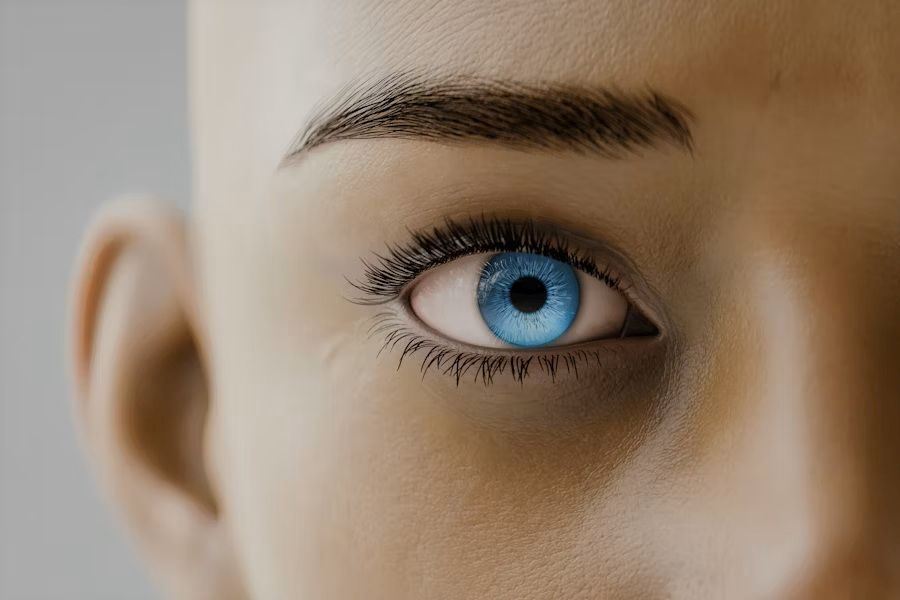A kocsi üres
10 Mind-Blowing Facts About Your Eyes You Didn't Know

Your eyes are among the most complex and fascinating organs in your body. These remarkable little spheres enable you to perceive the world around you, yet most people know surprisingly little about how they actually work. Eyes are not only windows to the soul—they're incredible biological marvels that deserve more recognition for their complexity and capabilities.
Let's dive into some truly astonishing facts about your eyes that will change the way you think about vision forever.
1. Your Eyes Process an Astonishing Amount of Information
Your eyes process about 36,000 pieces of information every hour. This staggering amount of visual data flows continuously through your optic nerves to your brain, which works tirelessly to make sense of everything you see.
To put this in perspective, if your eyes were a computer, they would need to be constantly connected to high-speed internet just to keep up with the information flow. The bandwidth required for your visual system would dwarf what most home networks can handle.
Your brain dedicates approximately 30% of its cortex to visual processing—more than for any other sense. This massive allocation of neural resources highlights just how central vision is to human experience and survival.
When you consider that your eyes accomplish all this processing while also adjusting to light changes, tracking movement, and maintaining depth perception, the complexity becomes even more impressive.
2. Your Eyes Can Distinguish Millions of Colors
The average human eye can detect and distinguish between 7-10 million different color variations. This extraordinary ability comes from specialized cells called cones in your retina.
Most people have three types of cone cells, each responding to different wavelengths of light: - Short-wavelength cones (blue) - Medium-wavelength cones (green) - Long-wavelength cones (red)
The combination of signals from these three cone types allows your brain to interpret an incredible spectrum of colors. This trichromatic vision gives humans a significant advantage in distinguishing ripe fruits from foliage and detecting subtle environmental changes.
Interestingly, some women possess a genetic mutation that gives them a fourth type of cone cell, potentially allowing them to see up to 100 million distinct colors. These "tetrachromats" experience a visual world richer in color variations than most humans can imagine.
3. Your Eyes Are Actually Brain Tissue
Your eyes are not just connected to your brain—they're literally an extension of it. During embryonic development, your eyes form as outgrowths of the brain, making them the only part of your brain visible from outside your body.
The retina, which lines the back of your eye, is composed of specialized neural tissue. In fact, neuroscientists classify the retina as part of the central nervous system. This is why ophthalmologists can sometimes detect neurological conditions by examining your eyes.
This brain-eye connection explains why your visual system can perform such sophisticated processing. Your retina doesn't just capture images like a camera—it begins processing visual information before it even reaches your brain.
The next time you look in the mirror, remember you're literally looking at a visible piece of your brain!
4. Your Eyes See Everything Upside Down
Everything you see is actually projected upside down on your retina, but your brain automatically flips the image. This happens because your eye's lens inverts incoming light as it passes through to reach the retina.
When light enters your eye, it passes through the cornea and lens, which refract the light and project it onto your retina upside down and backward. If this seems inefficient, consider that it's actually an unavoidable consequence of having a small opening (pupil) through which light must pass to form an image.
Scientists have conducted fascinating experiments where subjects wear special glasses that invert everything they see. After a period of disorientation, the brain adapts and begins to flip the images again, allowing people to see "normally" despite the inverted input.
This remarkable adaptation demonstrates your brain's incredible plasticity and its crucial role in visual perception.
5. Your Cornea Receives Oxygen Directly From the Air
The cornea is the only part of your body that doesn't receive oxygen through blood. Instead, it absorbs oxygen directly from the air.
This transparent front layer of your eye has no blood vessels—a necessary feature for maintaining clarity. If blood vessels were present in the cornea, they would scatter light and impair vision.
To compensate for this lack of blood supply, the cornea has evolved to absorb oxygen directly from the atmosphere through its outer layer. This is why corneal transplants can be successful without establishing blood vessel connections.
This unique characteristic also explains why wearing non-breathable contact lenses for too long can cause discomfort and potential damage. Without adequate oxygen, the cornea can become swollen and cloudy.
6. Your Eye Muscles Are Incredibly Strong
The muscles that control your eye movements are among the strongest muscles in your body relative to their workload. These tiny powerhouses allow your eyes to move more than 100,000 times per day.
If your leg muscles had to perform the equivalent amount of movement proportional to their size, you'd need to walk about 50 miles every day. These muscles rarely get tired despite their constant activity.
Your eye muscles achieve this remarkable endurance through specialized fiber composition. They contain a higher concentration of mitochondria—the cellular power plants—than most other muscles in your body.
Each eye has six muscles controlling its movement: - Superior rectus (upward movement) - Inferior rectus (downward movement) - Lateral rectus (outward movement) - Medial rectus (inward movement) - Superior oblique (downward and outward movement) - Inferior oblique (upward and outward movement)
The precise coordination between these twelve muscles (six for each eye) allows you to track moving objects smoothly and shift your gaze rapidly without conscious effort.
7. Your Eyes Have a Natural Blind Spot
Each of your eyes has a blind spot where the optic nerve connects to the retina, but you never notice it. This area contains no photoreceptors, creating a literal hole in your vision.
You can easily demonstrate this blind spot with a simple experiment: 1. Draw a small dot and a small cross on a piece of paper, about 3 inches apart 2. Close your right eye and focus your left eye on the cross 3. Move the paper closer or further until the dot disappears—that's your blind spot
Despite this gap in visual input, you don't perceive a black hole in your vision. Your brain cleverly fills in the missing information based on surrounding visual data, creating a seamless visual experience.
This remarkable compensation occurs automatically and instantaneously. Your brain makes an educated guess about what should be in the blind spot based on the surrounding pattern and fills it in so perfectly that you're completely unaware of the process.
8. Your Eyes Are as Unique as Your Fingerprints
The iris pattern in your eye is so unique that it's more distinctive than your fingerprint. Each person's iris contains a complex pattern of ridges and folds that remains stable throughout life.
This uniqueness has made iris scanning one of the most reliable biometric identification methods. Unlike fingerprints, which can be altered by injuries or wear, or facial recognition that can be fooled by aging or cosmetic changes, iris patterns remain remarkably stable.
The probability of two irises producing the same pattern is approximately 1 in 10^78—a number far exceeding the estimated number of atoms in the universe (10^80).
Even identical twins with identical DNA have different iris patterns. This uniqueness develops during embryonic formation when random processes create the intricate structures of the iris.
9. Your Eyes Can Reveal Hidden Health Conditions
Your eyes offer a unique window into your overall health, often showing signs of disease before symptoms appear elsewhere. During a comprehensive eye exam, doctors can detect over 20 systemic diseases by examining your eyes.
Conditions that can be identified through eye examinations include: - Diabetes (through tiny blood vessel changes in the retina) - Hypertension (visible through altered blood vessel patterns) - Autoimmune disorders (inflammation patterns in the eye) - Brain tumors (detected through optic nerve swelling) - Multiple sclerosis (through subtle changes in optic nerve appearance) - Thyroid disease (visible through eye protrusion and lid retraction)
This diagnostic capability exists because your eyes are the only place in your body where blood vessels can be viewed directly without invasive procedures. The transparent structures allow medical professionals to see nerves, blood vessels, and connective tissues in their natural state.
The importance of regular eye examinations extends far beyond checking your vision—they can literally save your life by catching serious conditions early.
10. Your Eye Color Can Change Throughout Your Life
Your eye color isn't permanently fixed at birth and can change throughout your lifetime. These changes occur due to genetic factors, health conditions, and environmental influences.
Most Caucasian babies are born with blue or gray eyes because melanin—the pigment that gives eyes their color—hasn't been fully deposited in the iris. As melanin production increases during the first few years of life, eye color often darkens.
But changes don't stop in childhood. Many adults experience subtle shifts in eye color throughout their lives due to: - Emotional states (which can affect pupil size and the appearance of eye color) - Lighting conditions (which interact differently with the iris structure) - Aging (as the iris thins with age, darker eyes may appear lighter) - Certain medications (some glaucoma treatments can permanently darken eye color)
Eye color changes can also signal health issues. Heterochromia—having two different colored eyes or a change in one eye's color—can sometimes indicate underlying medical conditions affecting the iris.
Protecting Your Remarkable Eyes
Given how incredible your eyes are, protecting them should be a priority. Here are some essential tips:
-
Schedule regular eye exams even if you don't wear glasses. Many eye conditions develop painlessly and without symptoms.
-
Wear UV-blocking sunglasses whenever you're outdoors to protect against harmful radiation.
-
Follow the 20-20-20 rule when using digital devices: every 20 minutes, look at something 20 feet away for 20 seconds.
-
Maintain a vision-friendly diet rich in leafy greens, colorful fruits, and omega-3 fatty acids.
-
Get adequate sleep to allow your eyes to rest and repair themselves.
Your eyes truly are marvels of biological engineering, packing incredible capabilities into a compact space. They process vast amounts of information, adapt to changing conditions, and connect you directly to the world around you.
The next time you blink, remember the amazing complexity happening behind those seemingly simple actions. Your eyes deserve appreciation not just for what they allow you to see, but for the remarkable way they accomplish it.
Hagyj egy megjegyzést
A megjegyzéseket a megjelenés előtt jóváhagyják.




